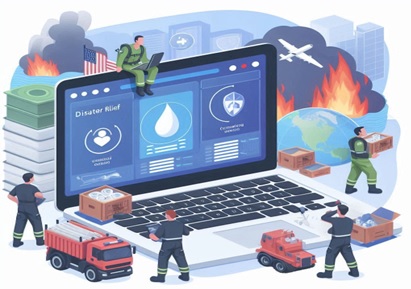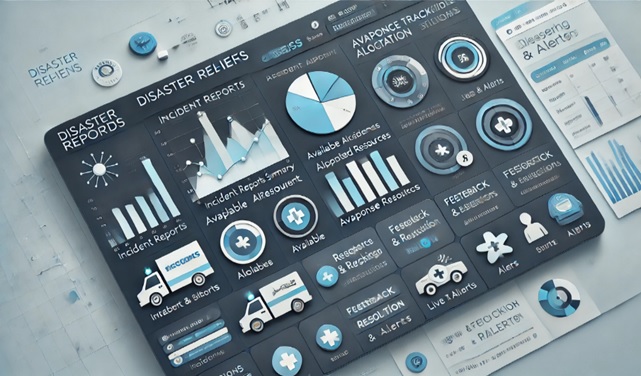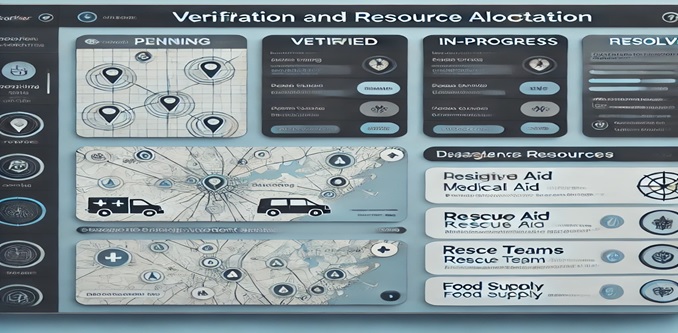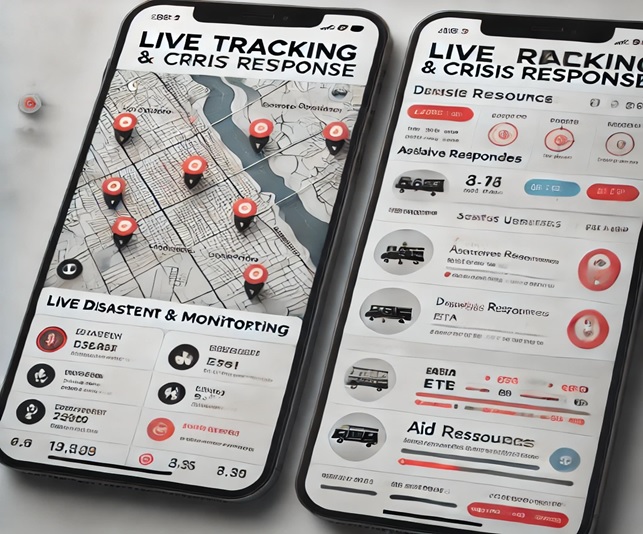Product
Disaster Relief and Crises Response System {DRCP}
A Disaster Relief and Crisis Response System is designed to minimize loss of life and property through a coordinated, AI-driven platform supporting preparedness, response, and recovery. Disasters can cause widespread disruption, and this system ensures real-time collaboration between government agencies, NGOs, first responders, and affected communities. Leveraging Microsoft technologies, it offers real-time alerts, AI-based disaster prediction, crowdsourced incident reporting, and centralized communication. The solution enhances response efficiency, accelerates resource allocation, and bridges communication gaps. With robust security, scalability, and interoperability, it serves a wide user base and aims to create a streamlined disaster management ecosystem for faster, more effective relief efforts.


Key Aspects of Disaster Relief and Crises Response System {DRCP}:
- Minimizing Loss: Aims to reduce the impact of disasters on human life, property, and the environment.
- Coordinated Response: Encourages collaboration among government agencies, NGOs, and the private sector for effective disaster management.
- Multi-Hazard Approach: Designed to handle a wide range of natural and man-made disasters.
- Technology-Driven: Utilizes advanced tools for real-time monitoring, communication, and resource allocation.
- Community Engagement: Involves affected communities in planning and implementing relief efforts to ensure relevance and responsiveness.
Key Phases of Disaster Relief and Crises Response System {DRCP}
- Mitigation: Aims to reduce the potential impact of disasters through proactive measures like land-use planning, enforcing building codes, and improving infrastructure.
- Preparedness: Involves planning, training, and resource stockpiling to ensure readiness for potential disasters.
- Response: Covers immediate actions to save lives, deliver emergency aid, and restore critical services during and right after a disaster.
- Recovery: Focuses on rebuilding and restoring affected communities, addressing long-term needs including infrastructure, economy, and well-being.


Key Components of Disaster Relief and Crises Response System {DRCP}
- Emergency Operations Centers (EOCs): Central hubs that coordinate disaster response efforts, uniting key decision-makers from various agencies.
- Incident Response System (IRS): Structured framework that ensures an organized, efficient, and coordinated response to incidents.
- Communication Networks: Robust and reliable systems are essential for inter-agency coordination and public information dissemination.
- Shelters and Evacuation Plans: Safe, accessible shelters and well-defined evacuation routes are critical for protecting at-risk populations.
- Resource Management: Effective allocation and tracking of personnel, equipment, and supplies are vital for timely response.
- Public Awareness and Education: Informing communities about risks and preparedness strategies builds resilience.
- Financial Support: Providing financial aid to individuals and communities supports sustainable, long-term recovery.

